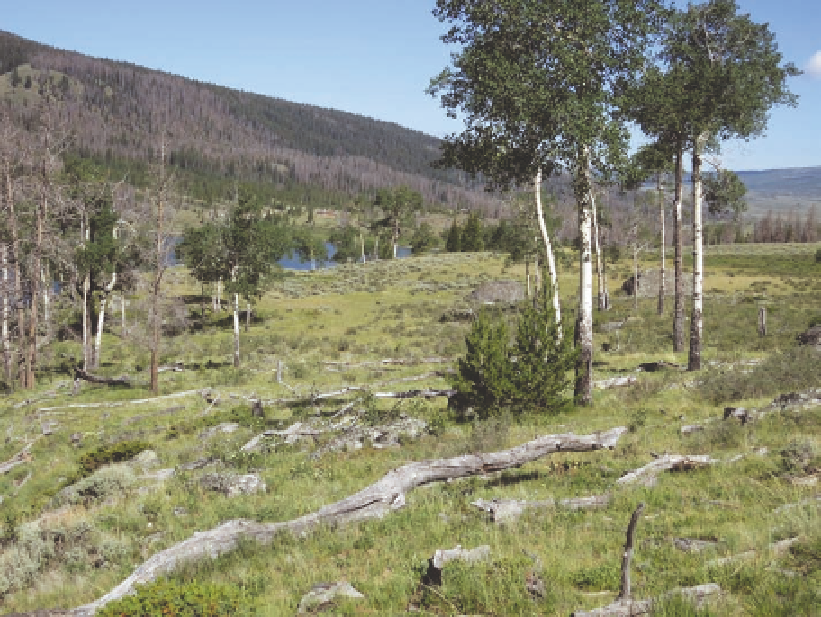Geoscience Reference
In-Depth Information
Fig. 11.7. Many lodgepole pine on the mountain slope in the
background have been killed by mountain pine beetles. in
other areas, engelmann spruce forests are affected similarly
by the spruce beetle. this area is near Green River Lakes in
the Wind River Mountains. Large numbers of elk are attracted
to this area in the winter because of a winter feeding program,
which may account for the poor condition of the aspen in
the foreground (see chapters 10 and 15). the soil on this
south slope is relatively moist, as indicated by the presence
of shrubby cinquefoil, mountain silver sagebrush, common
juniper, and western snowberry. the small conifer next to the
aspen is limber pine.
in recent decades, they are the focus of this section. only
a few of the hundreds of different kinds of bark beetles in
western north America actually kill trees; more than 99
percent feed on trees that have already died from other
causes, contributing to the decomposition of bark and
wood—an important ecosystem service.
32
All tree-killing bark beetles have similar life histo-
ries and ecological effects, which can be illustrated by
the mountain pine beetle. this insect attacks all native
pines in Wyoming (lodgepole, ponderosa, whitebark,
low, surviving in weakened or recently fallen trees,
with populations that are referred to as
endemic.
Peri-
odically, however, the population increases rapidly, and
vast numbers of trees are killed—an event referred to as
an outbreak, epidemic, or eruption (figs. 11.6 and 11.7).
An understanding of the life cycle of the beetle and of
the causes of its population explosions is fundamental
to understanding forest ecosystem dynamics.
in late July and August the female beetles emerge
from the bark and fly toward other trees. they are most
often attracted to larger trees (those greater than 6-8
inches in diameter), which surely is adaptive because
such trees provide the beetle larvae with more food,
namely, the phloem, cambium, and sapwood of the
inner bark. in addition to visual clues, the beetles can
be attracted by the odors emitted by stressed or weak-
ened trees, whether caused by drought, age, scarring by
disturbances, or other factors.
34
After landing, the female beetle bores a hole through
the bark and is soon cutting egg-laying galleries in the
outer sapwood and phloem. However, if the tree is in
good health, resin is produced in such quantities that
the beetle is
pitched out
before any damage to the tree
occurs. Such trees are easily recognized by small globs
of resin adhering to the external surface of the bark,
in which a dead beetle can often be found. Healthy
trees also produce chemicals that are directly toxic to

Search WWH ::

Custom Search